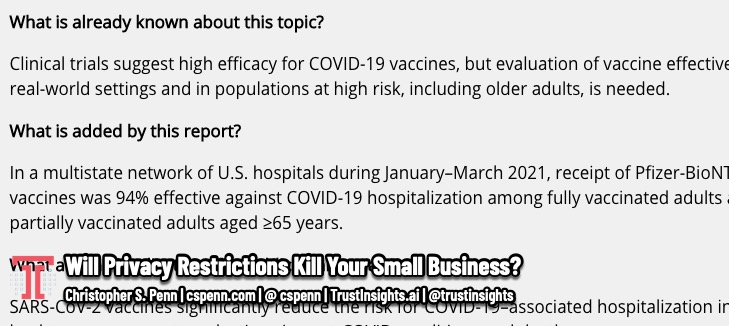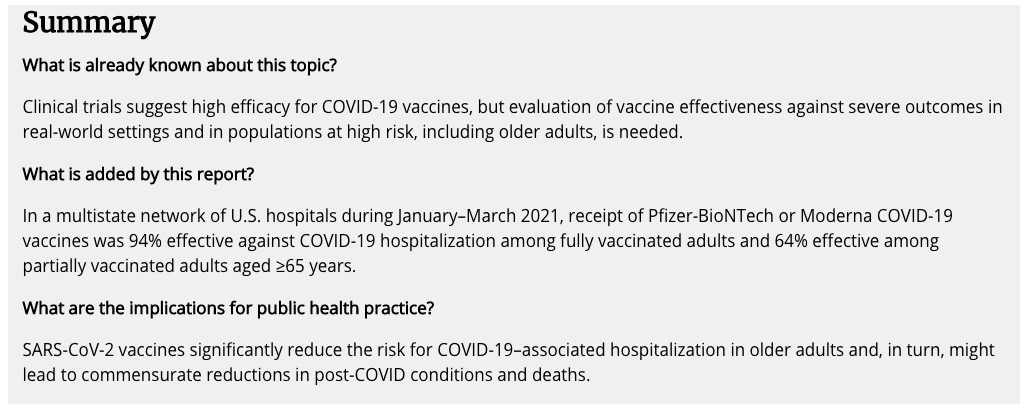
Irman asks, “so privacy restrictions doesnt kill my small business right? just maybe a bit spoil on my tracking about potential customer… then should i just continue my ads as normal?”
Enhanced privacy restrictions will definitely diminish some of the targeting effectiveness of your advertising, especially when that targeting relies on third-party data. However, the only way that would kill your small business is if you are solely reliant on third-party advertising data.
Strategically, if you are, then obviously this is a time to pivot quickly to first-party data – i.e. convincing customers to share information with you directly about their needs and preferences.
The reality is that first-party data is and always should have been our first priority as marketers. If customers are unwilling to volunteer information to us, then we’re not doing anything to convince them that’s a good trade – we aren’t providing any value to them with our marketing that persuades them we’re worth trading information with.
So if you’re in a situation where you don’t have any first-party customer data to fall back on, let’s build a working plan to get some.
Step 1: Provide Value
Despite the simplicity and obviousness of this step, it’s the one marketers don’t do most often. What’s in it for the customer?
One of the most useful concepts I’ve taken from reading academic papers in the last year about the pandemic is this blurb which is found in nearly every CDC study:

I love this template for not only the abstract, but for the outline of how we should think about our content marketing.
- What is already known on the topic?
- What value are we adding not only to our company or even to the customer, but to the industry as a whole?
- What should we do next/what’s the impact?
Take a look at your last few pieces of content marketing. What did they add, how did they advance your industry? What are the implications if customers don’t take action – with or without you – to address the issue?
If you look at your content and for question 2, you answer “uh…. nothing?”, then you’ve got your starting point for revamping your marketing.
All your marketing should provide value in some fashion. How much is up to you, but in the beginning, you’ll need to provide a lot of it to shake old brand perceptions and build trust.
Step 2: Ask for Value in Exchange
Once you’ve established trust and value, then you can start to ask for value in exchange. Start small – direct people to something low effort and low value so that the value exchange rate is still asymmetric, with you giving more value than you’re receiving. I find the easiest ask is to ask people to subscribe to a newsletter. It costs them nothing, and yet it’s one of the most valuable pieces of information we can have for outreach purposes.
First Party is the Best Party
First-party data is the best, highest quality, most durable data you can get for your business. It’s largely immune to privacy and ad-blocking technology, because the customer is giving it to you voluntarily. Wherever you are on your marketing technology and marketing maturity, make the move to first-party data as your top data priority in the coming weeks and months, and you won’t have to worry about ad technology undermining your business.
You might also enjoy:
- You Ask, I Answer: AI Music Collaborations and Copyright?
- Mind Readings: Most Analytics Data is Wasted
- Almost Timely News, January 7, 2024: Should You Buy a Custom GPT?
- Almost Timely News: Recipes vs. Principles in Generative AI (2024-03-03)
- Almost Timely News, Febuary 18, 2024: From Comment to Content
Want to read more like this from Christopher Penn? Get updates here:
 Take my Generative AI for Marketers course! |


Leave a Reply